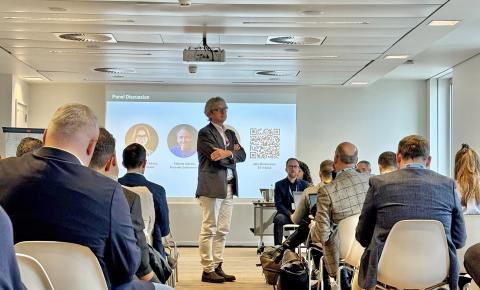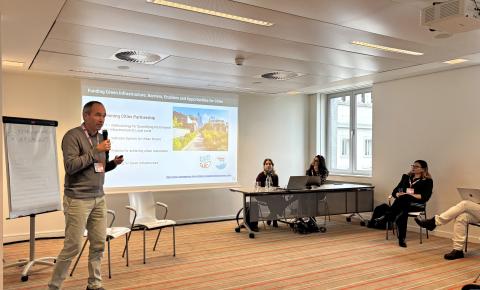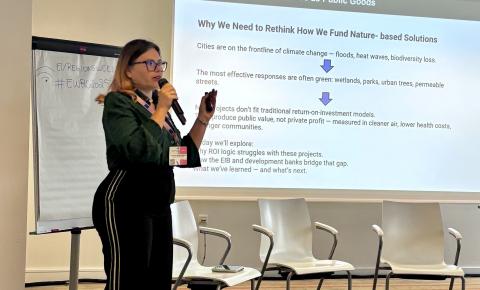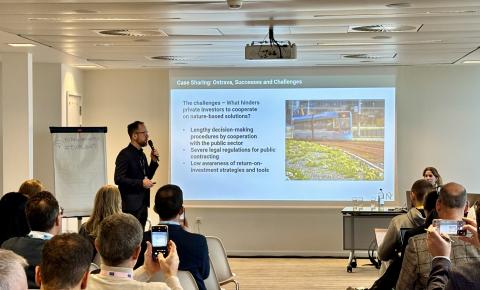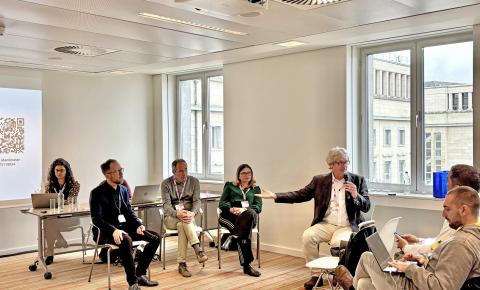From evidence to investment for urban nature: the Greening Cities Partnership at the European Week of Regions and Cities 2025
From public value to bankable projects
The first session, “Bankable Public Green Infrastructure and Services: A Practical Approach,” explored how cities can transform green ambitions into viable investment cases.
Moderator Jaroslav Mysiak, director of the Euro-Mediterranean Center on Climate Change set the tone noting that “urban resilience and citizens’ well-being are the ultimate return on investment.”
Ana-Maria Mitroi-Ciobica from the European Investment Bank (EIB) outlined why traditional return on investment models fail to capture the full value of nature-based solutions. Green infrastructure, she noted, “creates public value — increasing air quality, reducing flooding effects, improving health of citizens — but these are rarely reflected on a city’s balance sheet.”
She presented EIB’s three-step support approach — advisory, financing, and innovation — designed to help cities redefine value, combine grants and loans, and develop bespoke instruments that monetise environmental and social benefits. Preparation, metrics, and partnerships were highlighted as the cornerstones of bankability.
"Urban resilience and citizens’ well-being are the ultimate return on investment."
Cities in transition: the view from Brussels and Ostrava
Etienne Aulotte, from Bruxelles Environnement, shared the findings of a survey conducted within the Partnership: over 70% of European cities remain heavily dependent on public funding for green infrastructure. Administrative complexity, fragmented governance, and limited financial capacity were cited as major barriers to accessing private capital.
To unlock new pathways, Etienne argued, cities must “rethink revenue capture” — from property value increases and health benefits to partnerships with sectors like real estate and insurance. These indirect returns, he noted, can turn “non-bankable” green projects into viable investments.
From the City of Ostrava, Dušan Pöllich brought the perspective of a post-industrial city reinventing itself through green and blue infrastructure. Ostrava’s methodology and project cards guide both public and private actors in designing nature-based solutions, while its interactive map of green interventions serves as a communication and engagement tool. Yet, he stressed, lengthy decision-making processes, regulatory hurdles, and low investor awareness still hinder collaboration with the private sector.
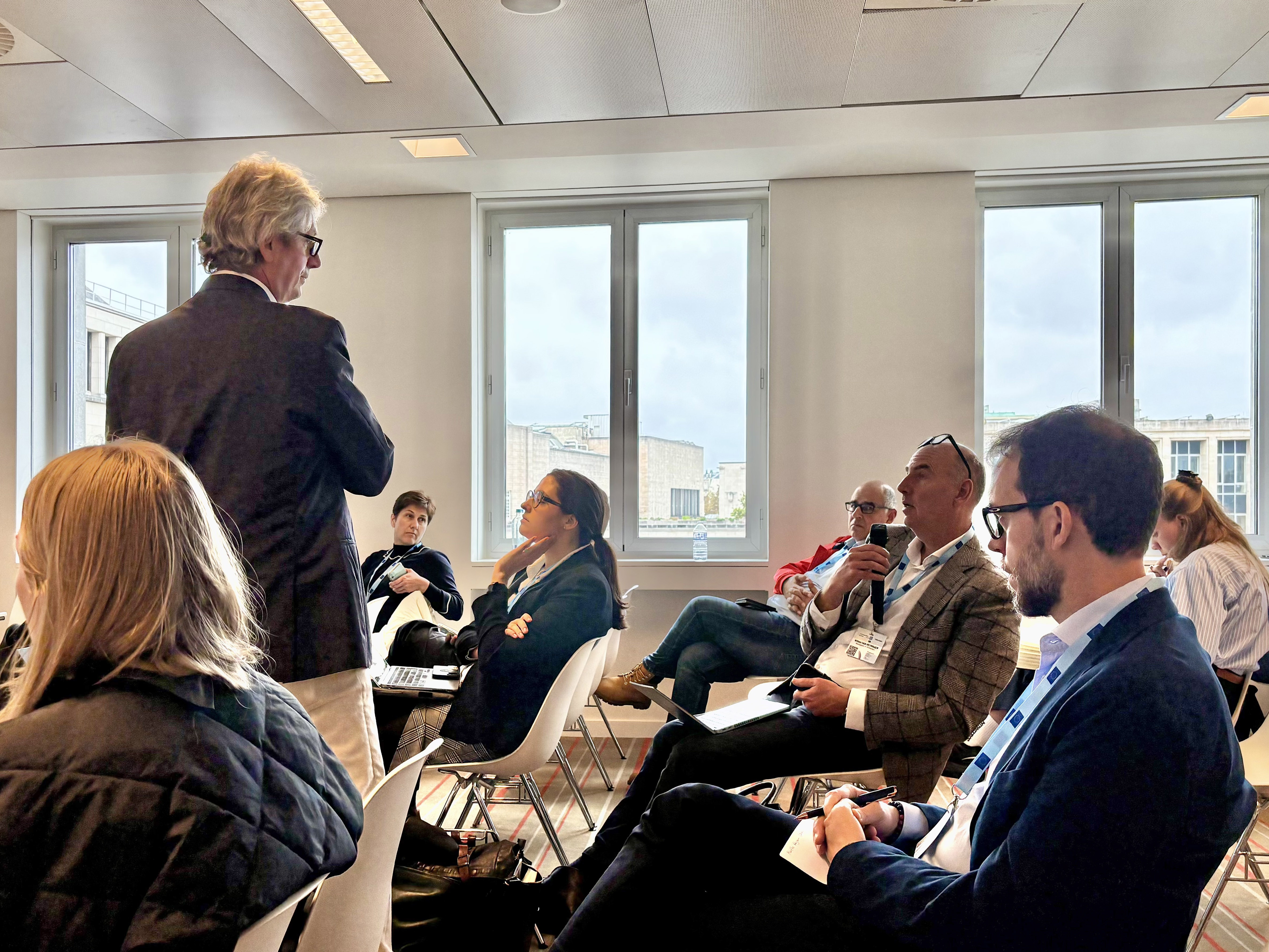
The missing link: partnerships and policy innovation
A lively audience discussion underlined what participants described as the “vicious circle” of limited capacity, risk aversion, and unclear value metrics. Voices from Amsterdam and the European Commission’s Cities Mission Secretariat called for stronger public–private cooperation frameworks, early stakeholder engagement, and clearer valuation of co-benefits.
Panellists converged on a shared conclusion: investing in nature is not a cost, but smart economics. Blended finance, regulatory sandboxes, and bundled projects were cited as promising avenues to scale up nature-based solutions.
How much nature do we need? Turning data into urban greening action
The second session, “How Much Nature Do We Need in Our Cities? Turning Data into Urban Greening Action,” moderated by Marino Cavallo, representative of the Metropolitan City of Bologna and Nuovo Circondarion Imolese, shifted focus from financing to evidence.
Presenting an early version of the ESPON–GILL methodology, Yoann Clouet, expert at the Institute for Urban Excellence, introduced a scalable tool for quantifying the demand for green infrastructure — helping cities identify where nature is most needed and for what ecosystem services.
By combining local and EU-level datasets such as Copernicus and Urban Atlas, the approach seeks to harmonise metrics and bridge data gaps, providing cities with a clear framework to evidence, monitor, and prioritise green investments aligned with the EU Nature Restoration Regulation.
“The financing gap remains vast — and local governments must have a seat at the table when shaping future EU funding frameworks.”
From data to decisions: insights from practice and policy
Bo Van Besien, representative of the City of Roeselare, illustrated how the medium-sized Belgian city uses the Flemish Climate Portal tools to model impacts and plan investments under different climate scenarios. Roeselare’s “trend scenario” shows that maintaining current resilience levels requires about €2 million annually, avoiding nearly €10 million in future climate damages — powerful evidence to justify municipal investment.
From a broader policy lens, Paola Lepori, policy expert at ICLEI Europe, emphasised that the challenge is no longer proving the value of nature-based solutions, but scaling and sustaining them. She spotlighted the Urban Nature Plans+ project and the Berlin Urban Nature Pact as examples of cities leading implementation of the Nature Restoration Regulation. Yet, she warned, “the financing gap remains vast — and local governments must have a seat at the table when shaping future EU funding frameworks.”
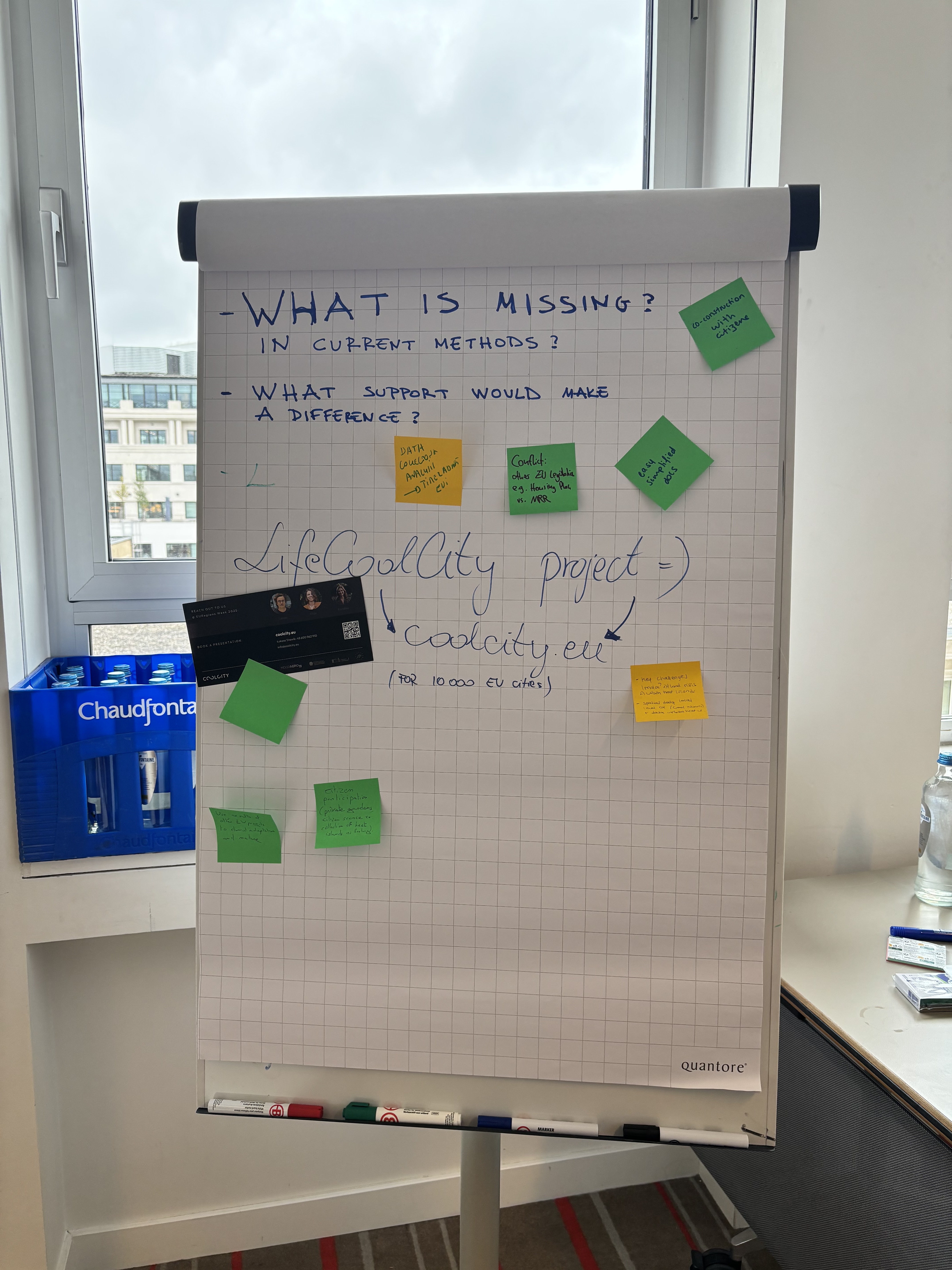
What we heard
Participants across both sessions pointed to fragmented responsibilities, missing data, and the lack of standard methods as persistent obstacles to green infrastructure delivery. The discussions echoed a shared concern: how to turn knowledge into action — and action into sustained investment.
Through interactive Slido polls, attendees highlighted the barriers to translating data into practice: from funding and maintenance gaps to limited political commitment and the need for comparable datasets across cities.
Next steps: connecting evidence and investment
Together, the two sessions painted a complete picture — from the metrics of need to the mechanisms of finance. The Greening Cities Partnership will continue refining its methodology for quantifying green infrastructure demand and its Innovation Lab on Financing Green Infrastructure, both key actions of its Action Plan.
The results will culminate in the Greening Cities Partnership Playbook, to be published in 2026, providing cities with practical tools, case studies, and policy recommendations to accelerate the nature restoration agenda.
As one participant noted, “data tells us where to act, and finance tells us how". The Partnership’s goal is to ensure that European cities can finally do both.
